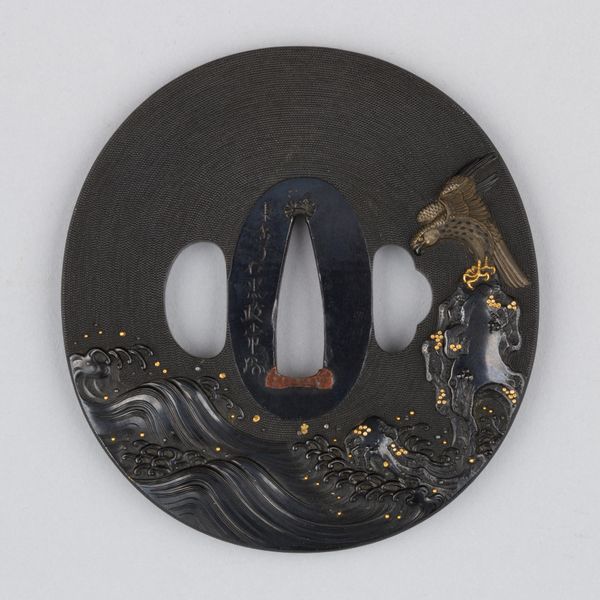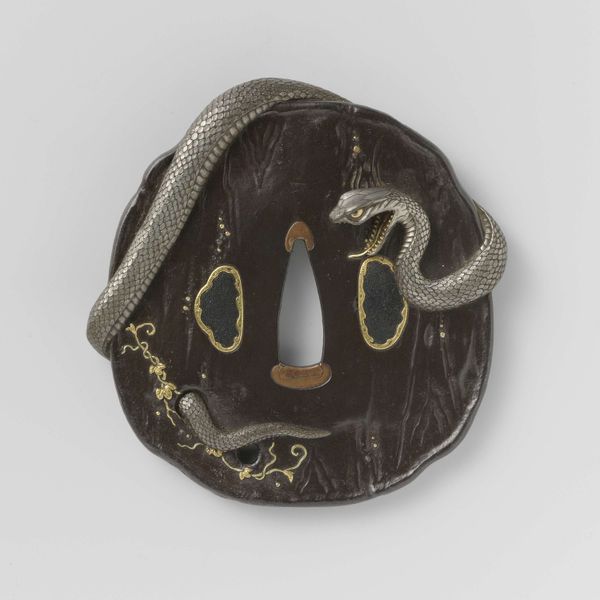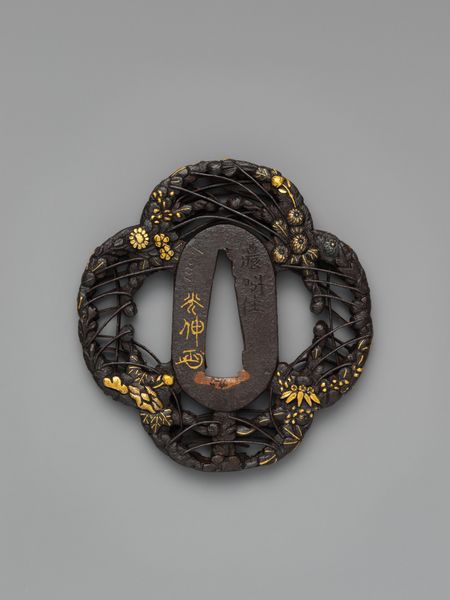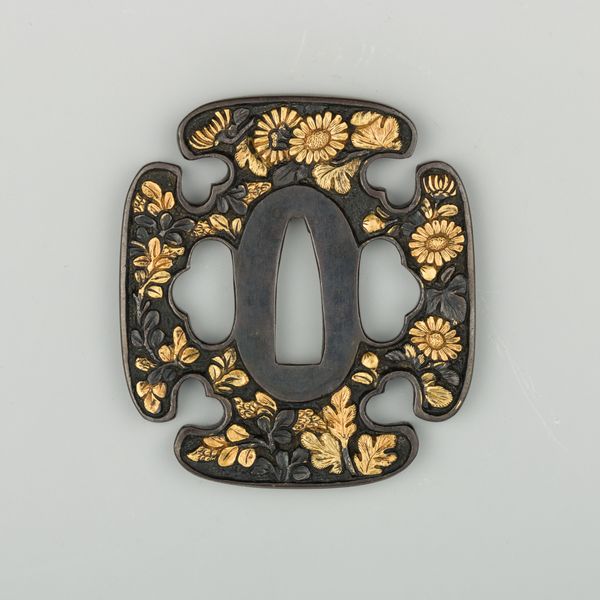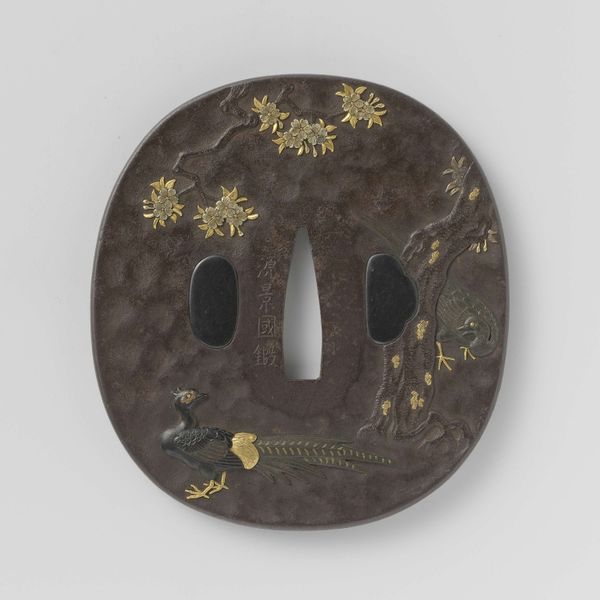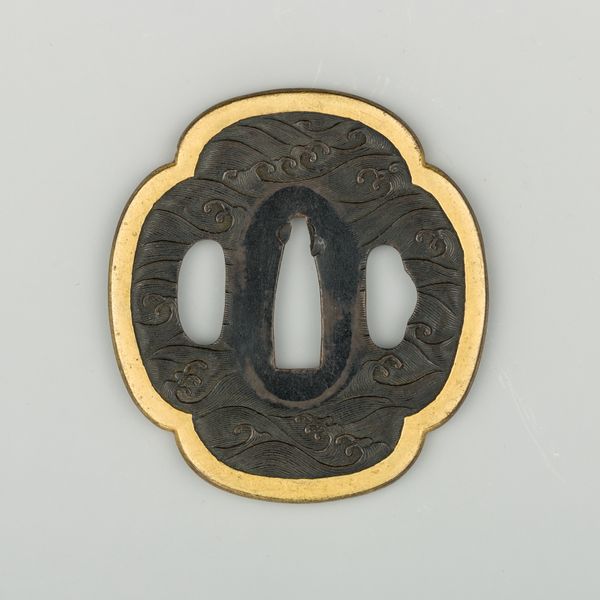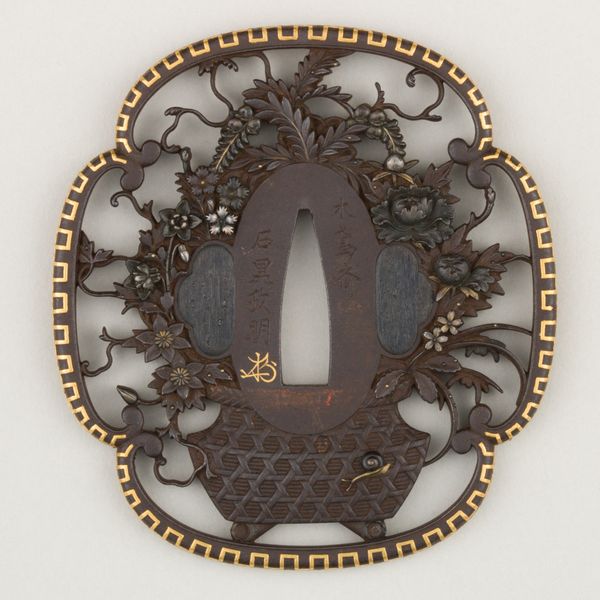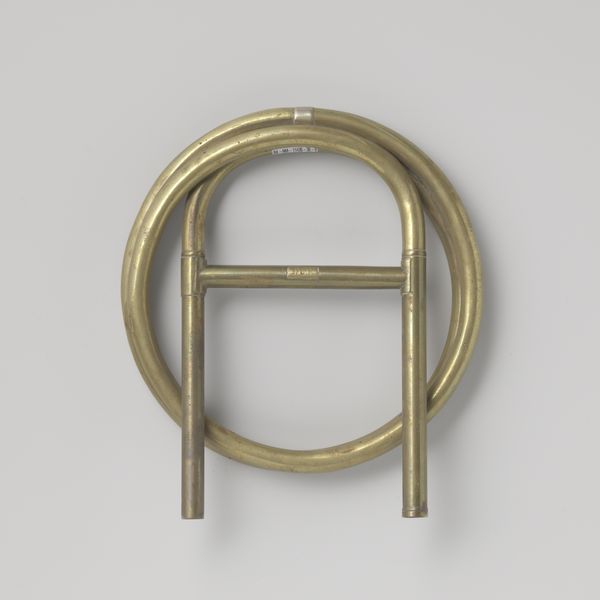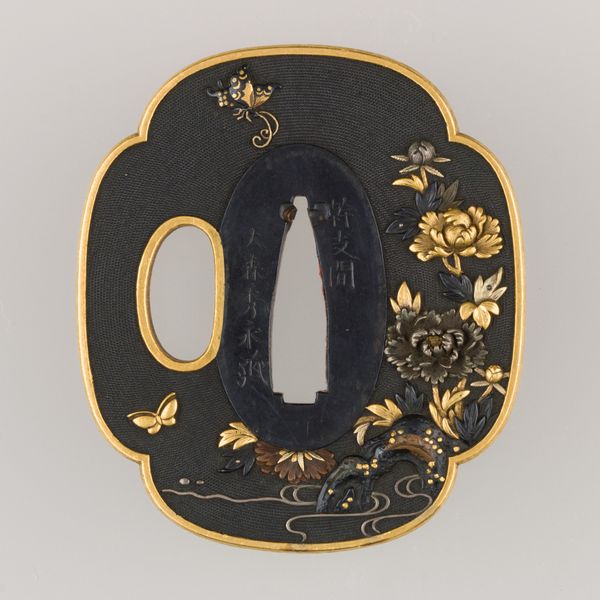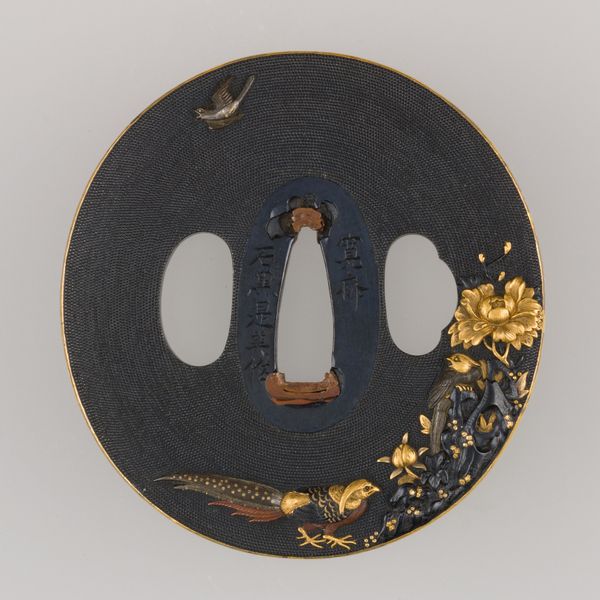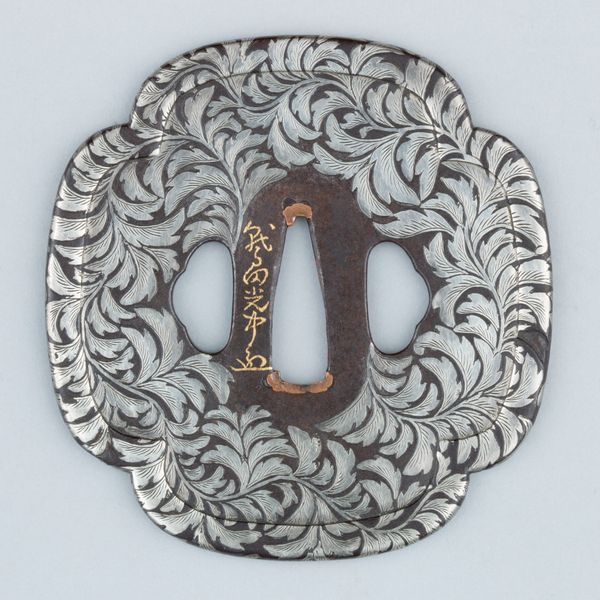
metal, bronze, sculpture
#
metal
#
sculpture
#
asian-art
#
bronze
#
japan
#
sculpture
#
armor
#
sword
Dimensions: H. 2 7/8 in. (7.3 cm); W. 2 5/8 in. (6.7 cm); thickness 5/16 in. (0.8 cm); Wt. 5.4 oz. (153.1 g)
Copyright: Public Domain
This sword guard, or tsuba, was made by Ishiguro Masayoshi in Japan in the late Edo period. The guard is made from copper alloy and gold and depicts bamboo. What does a sword guard tell us about the social and institutional history of art? In Edo-period Japan, sword fittings were not merely functional items, but were important indicators of status. Samurai were at the top of the social hierarchy, but as the long peace of the Edo period wore on, the aesthetics of the merchant class became more influential. Bamboo is a symbol of resilience and flexibility, qualities that the samurai class would have liked to associate with themselves. The bamboo is also a favorite motif in Chinese art, a signifier of education and taste. The guard subtly references this refined cultural sphere, pointing towards a blending of the martial and merchant classes. Art history helps us understand the social meaning of objects. Studying family crests, social histories, and trade records can give us a better understanding of the people who made and used this sword guard.
Comments
No comments
Be the first to comment and join the conversation on the ultimate creative platform.


